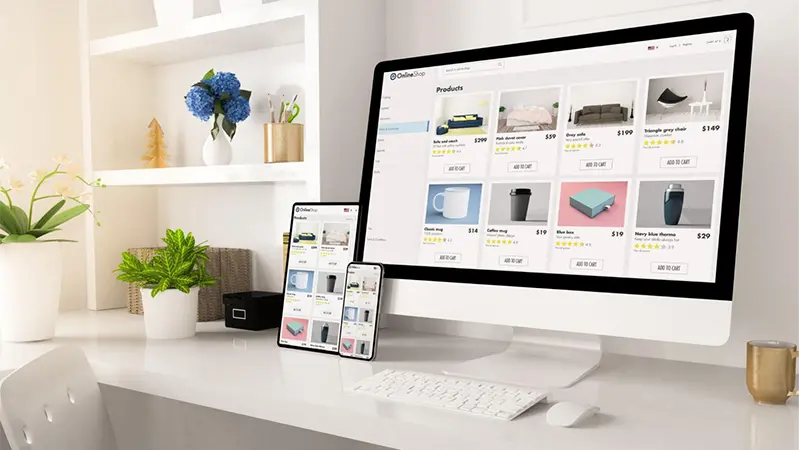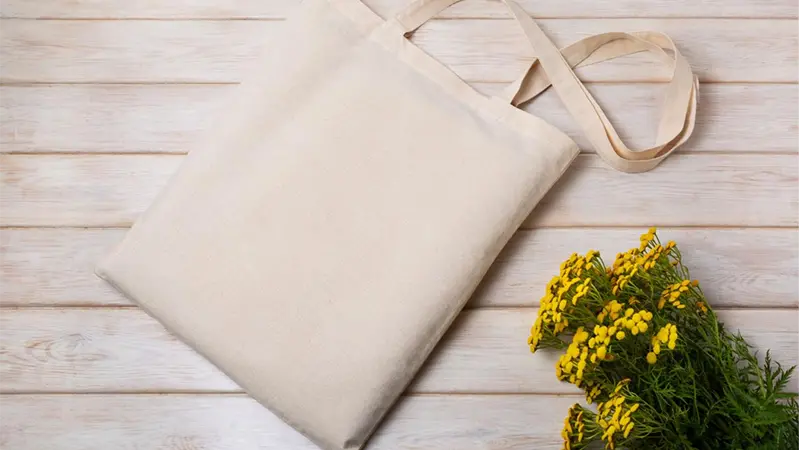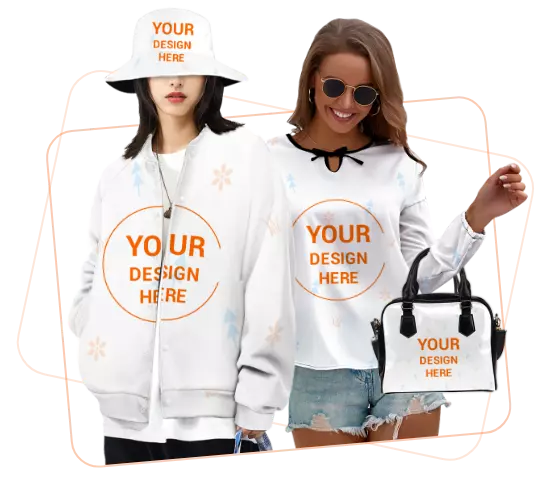
How to Make Money with Print on Demand: Practical Tips and Hints (2025)
Have a notebook full of design ideas but no cash for inventory? What if you could turn those concepts into real products sold worldwide—without ever touching a shipping box? Welcome to the world of Print on Demand (POD), one of the most accessible online business models for creatives in 2025. This guide isn't just about what POD is; it's your step-by-step playbook to earning your first dollar.
Page overview:
Print on Demand: Pros and Cons
Is Print on Demand Profitable?
How to Make Money with Print on Demand: 6 Steps to Success
Step 1: Selecting a Print on Demand Service
Step 2: Finding Your Niche: The 3-Step Method
Step 3: Set up Your Online Store
Step 4: Create Winning Designs
Step 6: Make Marketing Strategic
Useful Tips for Making Money with Print on Demand
What is Print on Demand?
Print on Demand (POD) is a type of modern business model where you don't manufacture products in advance, but only make them after a customer places an order. It is a smart way to start selling custom items without the hassle of inventory or spending some serious cash on expensive equipment.
Here's how it works: You create designs and upload them to a POD platform such as Inkedjoy. The platform is connected to your own online store or popular marketplaces like Etsy or Amazon. When a customer orders your product – whether that's a t-shirt, mug, or phone case – the POD supplier prints your design, packages it, and ships it to the customer for you.
With POD, you're free to focus on what you do best—creating—while your partner handles:
- Zero Inventory Risk: No buying products in bulk that might not sell.
- Automated Shipping & Fulfillment: From printing to doorstep delivery, it's all handled for you.
- No Equipment Investment: Access industrial-grade printers without spending a dime.
With POD, you only pay when someone makes a purchase. Everything else is taken care of by the POD supplier, so you can focus on your main job of creating designs, setting up for your store, and marketing your products.
There's a reason this business model has exploded in popularity because of the way it removes traditional barriers to starting a retail business. If you are an artist, an entrepreneur, or just someone looking for a side hustle, POD is a simple way to test your ideas without spending a lot upfront.

Print on Demand: Pros and Cons
Before we look at how to make money on print on demand, it is good to know the benefits and disadvantages of print on demand business. Let's break them down:
| Pros | Cons |
|---|---|
| Low startup costs: Almost zero investment as you only pay when a sale is made. | Lower profit margins: You may experience lower profit margins depending on your niche and products. Because the POD provider handles production and shipping, they take a significant cut, making your pricing strategy crucial. |
| Location independence: Run your business from anywhere with internet access. | Limited product customization: You may be limited to the supplier's products and printing abilities. |
| No inventory management: No need to worry about storage or unsold items. | Quality control challenges: You can't inspect every item before it reaches the customer. |
| Creative freedom: Try different designs and products without extra costs. Test hundreds of designs across dozens of products without financial risk, allowing you to find what sells best. | Shipping times: Fulfillment may take longer compared to traditional retail. |
| Automated fulfillment: Orders are processed, printed, and shipped automatically. | Competition: Low entry barriers mean many sellers offer similar products. |
| Time efficiency: Focus on design and marketing, while suppliers handle production. | Platform dependence: You rely on third-party suppliers and platforms to operate. |
| Scalability: No additional overhead, making it easy to expand your product line. | Branding limitations: Most suppliers offer generic packaging and shipping labels, limiting customization. |
Print on demand isn't a get rich quick scheme, but a way to build a real and sustainable online business.
Most of the time, the people who succeed do so because they are able to work around these limitations while taking advantage of the opportunities!
Is Print on Demand Profitable?
Yes, POD is profitable, and the numbers don't lie. The global POD market is projected to hit an incredible $45.6 billion by 2031.
But what does that mean for you? Here's a look at typical profit margins per item:
- T-Shirts: $5 - $8
- Hoodies: $10 - $15
- Mugs: $4 - $7
- Wall Art: $8 - $20
Imagine selling just 5 T-shirts a day. At a $7 profit margin, that's $1050/month in passive income from a single successful design. The best sellers are able to have multiple designs of their products and across more than one platform to earn more.
However, it's important to note that these numbers come with a caveat. Successful product and design decisions usually come with time, testing, and also constant analysis of the market to find winning products and designs that gained the attention of customers.
How Long Does It Take to Make Money with Print on Demand?
It's possible to make money with print on demand after three to six months of doing it consistently.
Some sellers might profit from something going viral quickly, but for most who build a successful POD business slowly, this typically lasts through the first month of setting up your store, designing your designs, learning the platform, and may include classes as well. These 2-3 months include market testing and adjusting strategies depending on customer response.
Regular sales start to show up by months 4-6, if sellers create new designs consistently while improving their listings. POD is a marathon, not a sprint, and the key to it is maintaining realistic expectations.
How to Make Money with Print on Demand: 6 Steps to Success
Setting up a print on demand business may sound intimidating; however, breaking it down into bite sized pieces makes it more approachable.
Let's look at the first step to creating a successful POD business:
Step 1: Selecting a Print on Demand Service
Deciding on a POD service is like picking the business partner that handles the quality of your product, your customer satisfaction, and your delivery reliability. You want to pick the best one.
Here's what to evaluate when selecting your POD partner:
- Product Quality & Range: Do they offer samples so you can check the quality firsthand? Does their product catalog (like the 1500+ items on Inkedjoy) fit the niche you're targeting?
- Pricing & Shipping: Are the base costs competitive enough for you to make a profit? Where are their fulfillment centers located to ensure fast shipping for your customers?
- Platform Integration: How easily does it connect to your store (e.g., Shopify, Etsy, etc.)? A smooth, automated integration is non-negotiable for a hassle-free business.
- Customer Support: What happens when an order goes wrong? Look for a partner with a responsive and helpful support team for both you and your customers.
- Product Range: The versatility of your product range can significantly affect your business growth. See what variety of products is available, test as many customization options as you can, and look for trending products in your niche. Plan your inventory so that you can also consider seasonal product availability.
One very good option is Inkedjoy, as it has some pretty cool benefits over traditional POD services. Free account setup, no monthly fee, competitive pricing structure, and many products catering to different areas.

You can also consider building your brand with their white label service. They also have direct shipping with no branded packaging.
All in all, if you are wondering how to make money from print on demand with the best supplier, Inkedjoy has got you covered!
Step 2: Finding Your Niche: The 3-Step Method
1. Start with a Passion Intersection: List 3 of your hobbies (e.g., Hiking, Sci-fi, Cats). Now, combine them to create something unique. Example: A niche for cat owners who love sci-fi.
2. Validate with Community Research: Search Reddit for r/scificats or Facebook for "Sci-Fi Cat Lovers" groups. Are they active? What kind of jokes or art do they share? This is your design inspiration.
3. Check Commercial Viability: Search Etsy for "sci-fi cat shirt." If there's competition, that's good—it means there's a market! Now, find the gap. Maybe no one is making designs for specific cat breeds like Maine Coons. That's your hyper-niche.
In order to validate your findings, you can use Google Trends to see if there is a rising interest in that particular niche. The more specific your niche, the better. For example, while you are targeting dog lovers in general, how about you focus on French Bulldog owners who love hiking? This will bring you a more targeted audience.
When analyzing your rivals, try to discover the holes in their offerings, which will help you describe what makes your offerings unique. Define your unique selling points (USPs). Perhaps you're the only one selling hiking gear for eco-friendly French Bulldogs, or maybe your designs feature local hiking trails. Figure out a sweet spot where your passion and a market need aren't being met.
Step 3: Set up Your Online Store
Building an online store is essential for showcasing your print-on-demand products.
Begin by creating a dedicated website, which offers full control over branding, layout, and customer experience. Platforms like Shopify or Wix simplify the setup, providing templates and integrations with print-on-demand services. An independent website also allows you to build a loyal customer base, track buyer data, and offer unique deals.
Alternatively, you can list your products on popular marketplaces. These platforms already have a substantial buyer base, which means you'll benefit from the built-in traffic. While marketplaces do take a percentage of your sales, they also handle much of the initial legwork, such as payment processing and customer support, making them ideal for beginners.
Using a mix of both approaches—your own site and an established marketplace—can maximize your reach, allowing you to capture both loyal customers and broader audiences.
Whichever option you choose, a polished store appearance, clear product descriptions, and an easy navigation setup are essential.

Step 4: Create Winning Designs
Your designs are the heart of your business. Here's how to approach creating artwork that sells.
- Design by yourself
If you're designing yourself, consider what your target audience finds appealing and try to design something that will tell a story or trigger an emotion.
Within your designs, adding words or phrases that trigger feelings such as humorous, inspiring, or nostalgic will help you make your designs memorable. Throwing in a few graphic elements, such as stylized icons or a subtle pattern, can make it even more appealing.
You also need to be original – avoiding cliches and having concepts that haven't yet been tackled. You can be specific too with jokes or niche references that speak directly to your audience and make your product a must-have.
- Hire someone
Another option is to hire a pro if you're not good at designing. There are freelance designers at various price points on websites like Fiverr and Upwork. Most experienced designers are familiar with how to make trendy and interesting designs for print on demand products. You can work with them to create a consistent flow of new ideas.
Releasing new designs consistently can help build anticipation while keeping your shop feeling fresh and driving sales and customer loyalty.
Step 5: Decide What to Sell
For profitability, it's important to choose the right products to sell. Print on demand works with a wide range of things, but it's best to concentrate on products that complement this business model.
The first thing to do is analyze the demand for certain products. For example, items such as t-shirts and mugs have a high turnover because they are popular and they are goods that offer diverse tastes.
Your product selection should align with your store's niche and customer interests. Remember that a specialized approach is often more effective than selling a bit of everything. Offering a cohesive product lineup builds a clearer brand identity and can attract more targeted customers.
High Profit Margin Products:
- T-Shirts: Easy to customize; the staple of print on demand.
- Mugs: Gives you the freedom to use it or gift it.
- Wall Art: Perfect for home decor enthusiasts, high perceived value.
- Tote Bags: Versatile, increasingly popular, and sustainable.
- Phone Cases: With high customization and in constant demand.

Step 6: Make Marketing Strategic
Organic Marketing (Building a Long-Term Asset)
- SEO for Marketplaces: Use keyword-rich titles and descriptions on Etsy or Amazon to get discovered in search.
- Pinterest & Instagram: Create eye-catching mockup photos of your designs. These visual platforms are perfect for POD products.
- Community Engagement: Share your designs in relevant Reddit or Facebook groups (always follow group rules to avoid spamming).
Paid Marketing (Getting Faster Results)
- Etsy or Amazon Ads: Promote your best-selling listings directly on the platform to boost their visibility.
- Facebook/Instagram Ads: Target your hyper-niche audience directly (e.g., you can target ads to people who like "French Bulldogs" AND "Hiking").
Aim to match the best practices in marketing while creating awareness and engaging with customers. You can also boost sales for your print on demand business by blending organic and paid methods.
Useful Tips for Making Money with Print on Demand
1. Always order samples
First, always order samples of your products. This crucial step allows you to personally verify print quality, fabric texture, and overall product presentation.
By experiencing your products firsthand, you'll catch potential issues before customers do and gain confidence in what you're selling.
2. Master Your Pricing Strategy
Develop a flexible pricing strategy that balances profitability with market competitiveness. Research what similar sellers are charging, but don't simply copy their prices.
Consider your production costs, platform fees, and desired profit margin. Sometimes, slightly lower prices can attract more customers, while premium pricing can suggest higher quality.
3. Look into hot trends
Stay ahead by looking into hot trends. Follow social media influencers, track popular hashtags, and use trend-tracking tools like Google Trends and Pinterest Insights.
Current events, pop culture moments, and seasonal themes can inspire designs that resonate with specific audiences.

4. Build a Diverse Design Portfolio
Create numerous designs to increase your chances of success. Don't put all your eggs in one basket – experiment with different styles, themes, and product types. The more diverse your portfolio, the higher the likelihood of finding designs that truly connect with customers.
Aim to upload new designs consistently, keeping your store fresh and engaging.
5. Make your store stand out
Finally, make your store stand out through unique branding and storytelling. Develop a consistent visual style, craft compelling product descriptions, and showcase your designs in creative mockups.
Your store should reflect your personality and connect emotionally with your target audience. Remember, in the crowded print-on-demand marketplace, differentiation is key to capturing customer attention.
Conclusion: Your Journey Starts Now
Success in print on demand is a marathon, not a sprint. It's about combining your unique creativity with strategic niche selection and consistent marketing. You now have the roadmap to get started.
The next step is to pick your vehicle for this journey. With its user-friendly platform and vast product range, InkedJoy is an excellent partner to help you launch your business and turn those ideas into income.
FAQs
What is the best print on demand company?
The best POD company varies depending on your specific needs. Printful offers excellent quality, Redbubble has great artist exposure, and Inkedjoy provides competitive pricing and diverse products. Consider factors like product range, integration options, pricing, and shipping speeds when choosing your ideal platform.
Can I get all-over print products with POD?
Many print-on-demand platforms now offer all-over print products like full-coverage t-shirts, leggings, and swimwear. Platforms like Inkedjoy specialize in these designs. Ensure your artwork is high resolution and designed specifically for all-over printing to achieve the best results.
Do I really need a photo shoot for my products?
Most POD platforms have mockup generators that bring out professional product images automatically. While custom photoshoots are a nice touch for your brand, they aren't necessary. If you want to attract potential customers, then use high-quality mockups with good lighting and show your designs from different views.
What is the best way to find profitable print on demand niches?
Trend research topics, explore Facebook and Reddit's niche communities, use Google Trends, and competitors. Find communities interested in specific things. Think of evergreen niches, such as pets, hobbies, professions, and personal identities.



